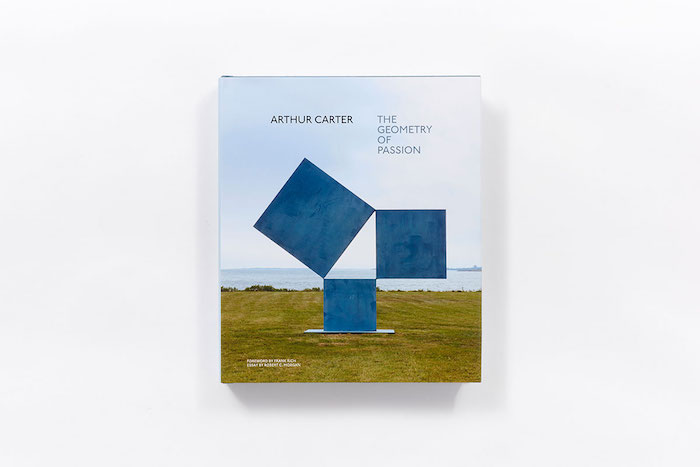Book Review: 'Arthur Carter: The Geometry of Passion'

Some people get all the good genes. Arthur Carter is certainly one of those people. Artist, classical pianist, entrepreneur, industrialist, investment banker and journalist—he even studied mathematics under the tutelage of Albert Einstein’s assistant—Carter’s resumé makes the most accomplished among us seem lacking.
The new book, Arthur Carter: The Geometry of Passion (Abrams Books, 2016), depicts Carter’s artistic oeuvre in crisp images that capture the depth and breadth of his creativity. In the biographical forward, journalist Frank Rich writes, “Carter’s multifaceted, all-American life, with its many careers and even more passions, is as kinetic as his high modernist art is austere and spare.”
The spare esthetic Rich makes reference to stems from Carter’s philosophy, “Only squares and circles, lines and ellipses can elegantly explain and simplify the complex meaning of life.”
And perhaps Carter has a need to distill the world into “squares and circles, lines and ellipses” because his own life has been anything but spare. He founded the investment company, Carter, Berlind & Weill, that would eventually reform into Shearson Lehman Brothers and Citigroup. He established The Litchfield County Times in 1981 and The New York Observer in 1987. One can easily link Carter’s business experience to his art. One of his more famous quotes is, “Purity in both design and business function means never dilute, never diffuse, and never bloat.”
In addition to sculpting, Carter draws and paints. The Passion of Geometry is organized smartly, with facing pages containing the drawing studies and the sculptures they eventually become, while an entire section is devoted to his paintings done in bright primary colors and sharp black lines that evoke Piet Mondrian.
Writes Rich, “For [Carter], the literal concreteness of form, line, and color constituted nothing less than liberation.”
Carter bases much of his work on mathematical and geometric principles, perhaps the most easily recognizable of which is the Fibonacci sequence. Whether it’s an exploration of angles in the sculpture “An Arc Connected by Two Acute Angles,” or any in his series of five “Studies in Fibonacci” paintings, or even a work simply titled “52,” Carter’s fascination with portraying how the world fits together is apparent. A lengthy essay by critic Robert C. Morgan locates Carter’s work in the tradition of modern abstract art and the recent history of sculpture. Writes Morgan, “[Carter] indulges in geometric form as his reality and the embodiment of his understanding of the human condition.”
Though Carter was born in New York City in 1931, he spent much of his childhood in Woodmere, Long Island. He enjoys a local connection to the Hamptons area, having bought a 15-acre Remsenberg waterfront estate almost 50 years ago. At one point, he even owned a 50% stake in The East Hampton Star. His work has been shown in the Southampton Arts Center on Jobs Lane, in the village, as well as at the New Britain Museum of American Art and the 80WSE Galleries at New York University, among others.
In fact, if you’re ever near the NYU campus, you can see one of Carter’s sculptures at 70 Washington Square South, near the Bobst Library. The sculpture, simply called “The University,” is for sale.
Arthur Carter: The Geometry of Passion (Abrams Books, 2016), $60, can be purchased locally or online at arthurcarter.com and abramsbooks.com.



